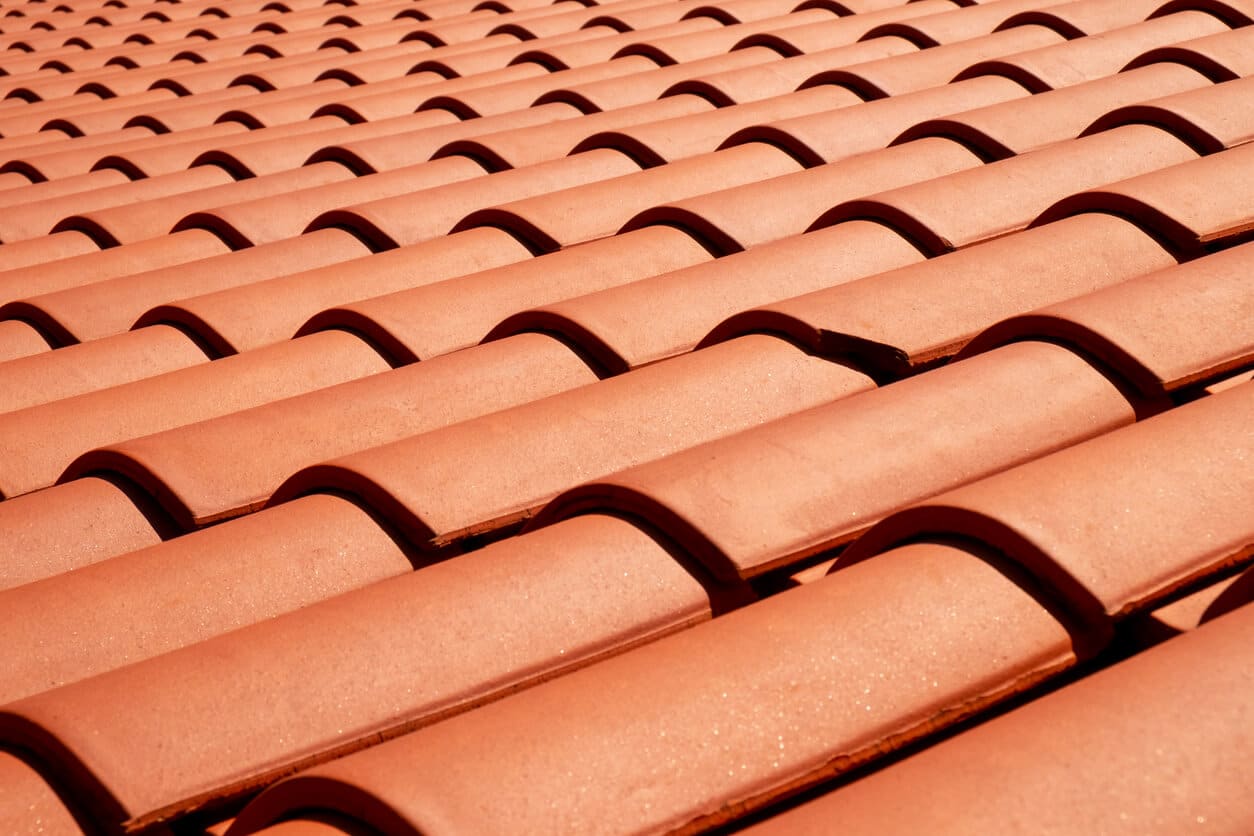
You first noticed it after that last heavy rain. The faint stain spreading across your bedroom ceiling. Maybe it’s nothing, you tell yourself. Just a fluke. But deep down, you know it’s not.
You chose a tile roof for its beauty and durability, a perfect match for your Atlanta home nestled beneath old oaks and maples. But now, you’re worried. What if the leak means a full roof replacement? What if the repairs spiral into something you didn’t budget for?
The truth is, tile roofs are built to last. But they’re not invincible. And in Atlanta’s stormy seasons and tree-shaded streets, even a single cracked tile or worn-out underlayment can quietly cause costly damage.
At Mr. Roofer, we understand how overwhelming roof problems can feel. That’s why we lead with trust, not pressure. Our team specializes in preserving tile roofs through expert inspections, honest assessments, and repair-first solutions that save you money and protect the character of your home.
Before that small stain turns into a major headache, here’s what every Atlanta homeowner needs to know about tile roof repair.
What Makes Tile Roofs Leak?
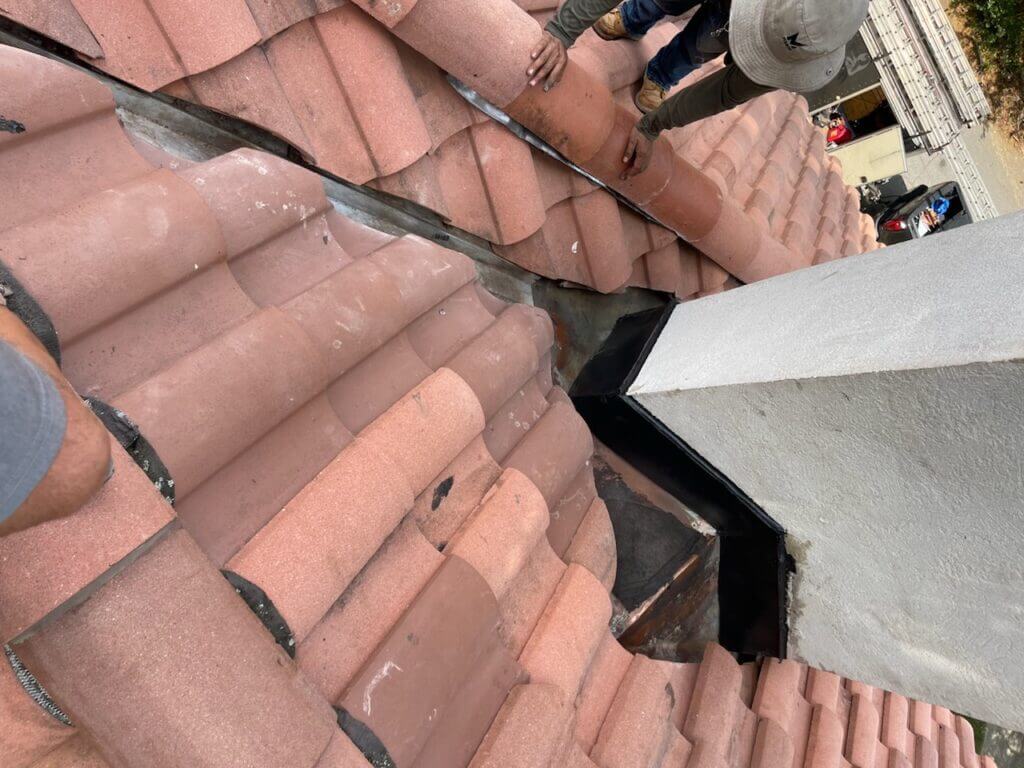
Atlanta’s tile roofs are known for their beauty and longevity, but they aren’t immune to problems. Many homeowners are surprised to learn that tile leaks often start where you can’t see them: under the tiles. Here’s a breakdown of what’s really happening when your tile roof starts letting water in.
Anatomy of a Tile Roof: Underlayment, Battens, Flashing, and Tiles
A tile roof is more than just the tiles you see from the street. It’s a layered system designed to shed water efficiently while withstanding the elements for decades.
- Tiles act as the first line of defense, deflecting rain, sun, and debris.
- Battens (usually wood or metal strips) hold the tiles in place and create space underneath for drainage and airflow.
- Underlayment (typically a waterproof membrane or felt) is the unsung hero. It’s what actually keeps water from reaching the wooden roof deck.
- Flashing (usually metal) protects vulnerable areas like chimneys, valleys, vents, and skylights where water tends to pool or penetrate.
A failure in any part of this system can lead to leaks, often silently, until it’s too late.
Why the Underlayment—Not Just the Tiles—Often Causes the Issue
Unlike shingles, tile roofs aren’t completely waterproof on their own. They’re water-shedding systems. That means the underlayment carries much of the load when it comes to leak prevention.
Over time, especially in Atlanta’s humid climate, the underlayment can deteriorate due to age, heat, poor ventilation, or accumulated moisture. Once compromised, it allows water to seep beneath the tiles and into your home, even if the tiles themselves look perfectly fine from the ground.
That’s why Mr. Roofer focuses heavily on evaluating the condition of the underlayment during inspections, not just the visible tiles.
Common Causes of Tile Roof Leaks:
Cracked or Slipped Tiles
Tree limbs, hail, foot traffic (often from improper maintenance), or even age can cause tiles to crack or shift out of position. A single displaced tile may be all it takes to allow water intrusion. And in Atlanta’s wooded neighborhoods, falling debris is a year-round threat.
Damaged Flashing (Especially Around Chimneys and Skylights)
Flashing is one of the most common failure points on tile roofs. Improper installation, corrosion, or loosened seals can all allow water to bypass the tile system entirely. Areas like chimneys, skylights, roof valleys, and walls are especially vulnerable.
Rotting Underlayment
In older homes, the underlayment might be 20+ years old, which is well past its effective lifespan. As it breaks down, it loses its ability to repel water. Mold, mildew, and wood rot can follow, especially if the problem is hidden beneath intact tiles.
Ice Dams or Improper Installation
While ice dams aren’t common in Atlanta, they can still occur during sudden cold snaps, especially on poorly ventilated or steep tile roofs. Improper installation (including shortcuts on flashing, nail patterns, or tile alignment) is also a leading cause of leaks, particularly on additions or repairs done by less experienced contractors.
Signs You Might Need Roof Tile Repair
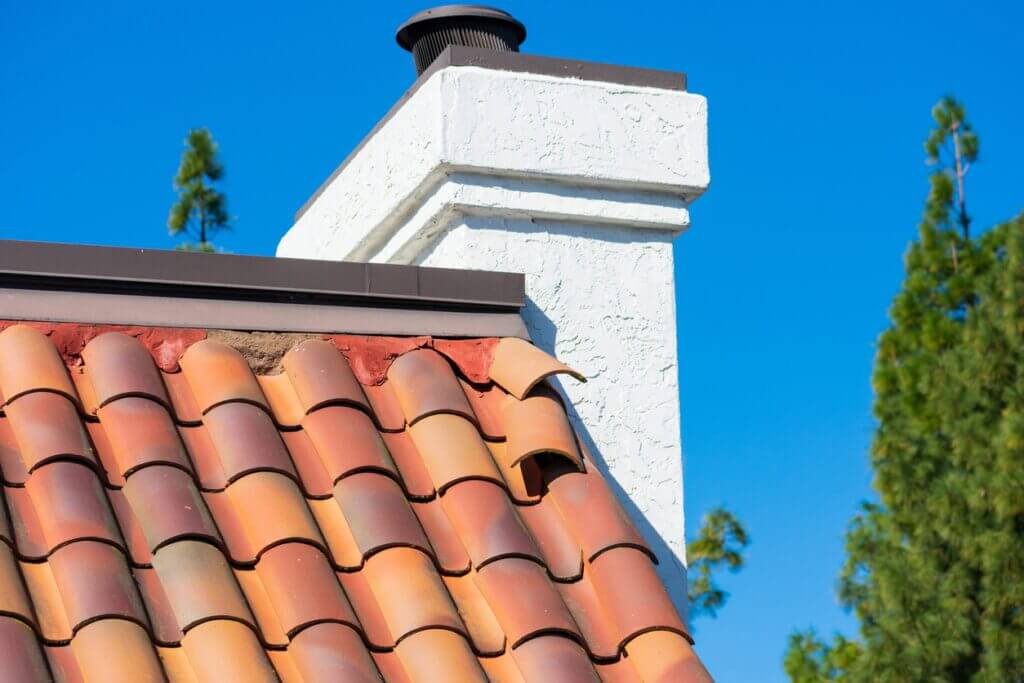
Tile roofs are built to last, but they don’t always show clear signs when something’s wrong, especially in Atlanta’s mix of intense summer sun, sudden downpours, and leafy debris. Catching issues early can save you thousands in repairs and prevent interior damage.
Here’s how to spot the subtle clues that your tile roof may be due for professional attention.
Early Warning Signs Inside the Home:
Sometimes, the first evidence of a roof problem shows up inside your house, far from the tiles themselves.
Discoloration on Ceilings or Walls
Yellow or brown water stains on your ceiling, around vents, or near the tops of walls are strong indicators of a roof leak. These stains may appear long after the leak begins, especially if water is slowly pooling behind insulation or drywall.
Mold or Musty Odors
Persistent damp smells in rooms, closets, or attics, especially after a heavy rain, could mean moisture is getting in through compromised underlayment or flashing. Mold can begin growing within 24-48 hours, making early detection critical for your health and your home’s structure.
Exterior Warning Signs:
While internal clues can be subtle, there are also visual cues on the outside of your home that shouldn’t be ignored.
Visible Tile Displacement or Breakage
From ground level, look for cracked, curved, or missing tiles. Even a single misaligned tile can create an entry point for water. Displacement may also signal damage to the battens or underlayment beneath, especially after a storm or fallen debris.
Water Pooling at the Base of Your Walls
If you notice puddles collecting around the foundation after rain, especially near exterior walls or patios, it could be the result of a leaking roof or faulty gutters. Water may be bypassing the roof system entirely and running down inside your wall cavities.
Roof Granules Collecting in Gutters
While tiles aren’t coated like asphalt shingles, concrete, and clay tiles do shed fine granules over time. If your gutters contain excessive debris or gritty sediment, it could signal accelerated wear from aging tiles or erosion caused by poor drainage design.
Atlanta-Specific Risks to Tile Roofs
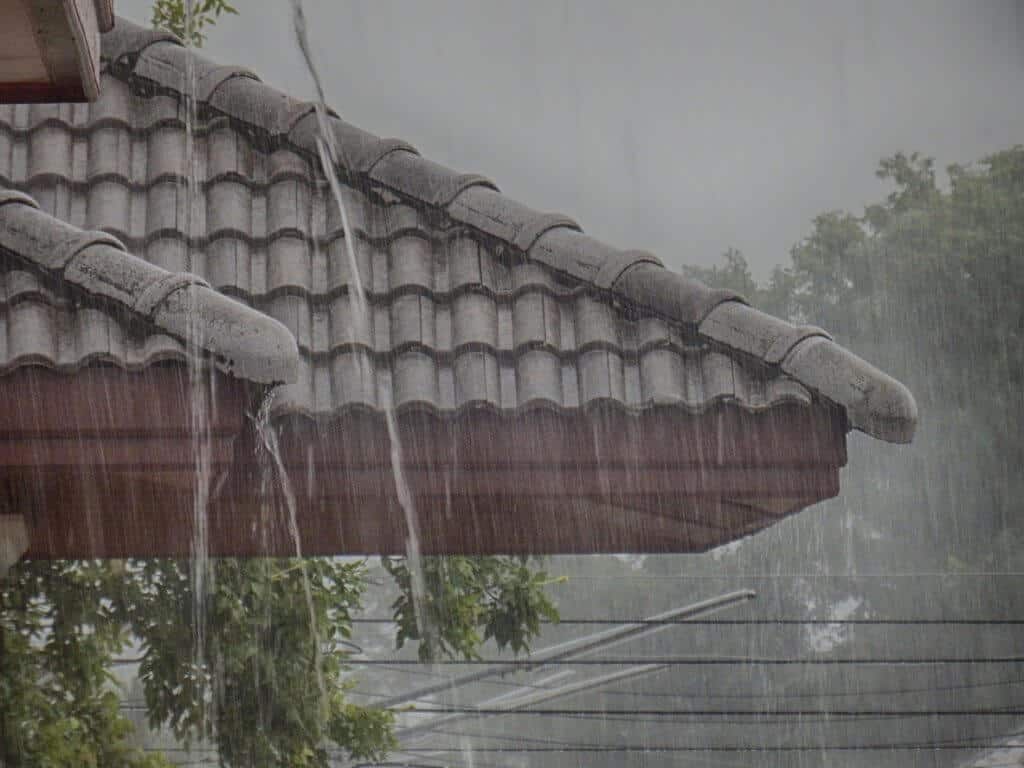
Tile roofs in metro Atlanta face a unique combination of environmental and structural challenges. From dense, tree-lined neighborhoods to intense seasonal storms, local conditions can accelerate wear and cause unexpected issues, even for well-built tile systems. Here’s what makes Atlanta different:
Heavy Rains & Clogged Gutters
Atlanta’s frequent, sudden downpours, especially during late spring and summer, put a massive strain on drainage systems. Tile roofs are designed to shed water efficiently, but when gutters and downspouts are clogged, that water backs up under the tiles or flashes sideways into vulnerable areas like valleys and eaves.
Water intrusion from clogged gutters can quickly lead to rotting underlayment, mildew inside attic spaces, and even interior leaks. Regular cleaning and gutter guards are essential preventive steps, especially in heavily wooded areas like Druid Hills, Buckhead, and Sandy Springs.
Tree Debris and Fallen Branches
Many older Atlanta neighborhoods are prized for their towering oaks and maples, but those same trees can wreak havoc on tile roofs. Falling branches, acorns, and constant leaf buildup can dislodge tiles, crack them on impact, or trap moisture that accelerates mold and rot.
Even overhanging limbs brushing against the roof during windstorms can cause tiles to shift or wear prematurely. Regular pruning and debris removal are key to extending your roof’s lifespan in tree-dense areas.
Age + Georgia Sun Exposure
Tile roofs can last 50+ years, but Atlanta’s intense UV exposure and seasonal heat cycles can break down key components, especially underlayment. The Georgia sun bakes roofing materials during the day, while sudden cool-downs at night create expansion and contraction stress. Over decades, this leads to cracks, brittle flashing, and curling or shrinking underlayment.
Even if your tiles still look great, what’s beneath them may be nearing failure, especially on older homes built before the 2000s.
Improper Prior Repairs
Atlanta’s real estate market has seen waves of renovation, flips, and quick fixes, often by contractors unfamiliar with the nuances of tile roofing. We frequently uncover patch jobs, reused flashing, or mismatched tiles that create more problems than they solve.
Improper repairs can block water channels, disturb underlayment, or accelerate future leaks. That’s why Mr. Roofer emphasizes long-term solutions and transparency over quick patches, especially for high-value homes that deserve lasting protection.
Clay Roof Repair vs. Concrete Tile Repair

Not all tile roofs are created equal. In Atlanta, homeowners typically have either clay or concrete tile roofing, each with its own strengths, vulnerabilities, and repair considerations. Understanding the difference can help you make informed decisions when leaks appear or tiles start to shift.
Clay Tile Roof Repair:
More Fragile and Porous, Higher Aesthetic Value
Clay tiles are known for their timeless elegance and natural coloration. Many historic homes in neighborhoods like Inman Park and Virginia-Highland feature clay tile roofs, prized for their curb appeal and heritage charm.
However, clay is more brittle than concrete. It can crack under pressure from foot traffic, falling limbs, or even thermal expansion. It’s also more porous, which means it can absorb water over time if not sealed properly, making regular inspections even more important.
More Expensive to Repair Due to Tile Fragility and Sourcing
Repairing clay tile roofs often costs more, not just because the tiles break more easily, but also because sourcing matching tiles for older roofs can be difficult. Even slight color or style variations can affect the roof’s appearance and value.
Mr. Roofer works carefully to preserve the visual integrity of your home while ensuring structural soundness. Repairs are typically more delicate and labor-intensive, requiring expert hands.
Concrete Tile Repairs:
More Durable, but Heavier and Can Stress Older Structures
Concrete tiles offer strength and durability at a more affordable price point. They’re often used in newer Atlanta homes and custom builds in areas like Alpharetta and Brookhaven. They resist impact better than clay and handle freeze-thaw cycles more reliably.
However, concrete tiles are heavier, which can place strain on older or poorly framed roof structures. That’s why it’s important to ensure that your framing and decking can handle the added weight before considering a replacement or extensive repair.
When repairs are needed, concrete tiles are generally easier to match and less expensive to work with than clay, but they still require careful handling to avoid breakage.
How Mr. Roofer Determines the Right Repair Method Based on Your Roof’s Age, Style, and Material
At Mr. Roofer, we don’t use a one-size-fits-all approach. Our first step is always a comprehensive inspection to identify not just the type of tile, but the condition of the underlayment, battens, and structural components underneath.
We assess:
- The age of your roof
- Whether the tiles are original, replaced, or mixed
- The condition of the flashing and the surrounding materials
- The historical or aesthetic significance of your roof
From there, we design a repair-first solution that restores both function and curb appeal, using materials and methods best suited to your roof’s specific style and history.
How Much Does Tile Roof Repair Cost?
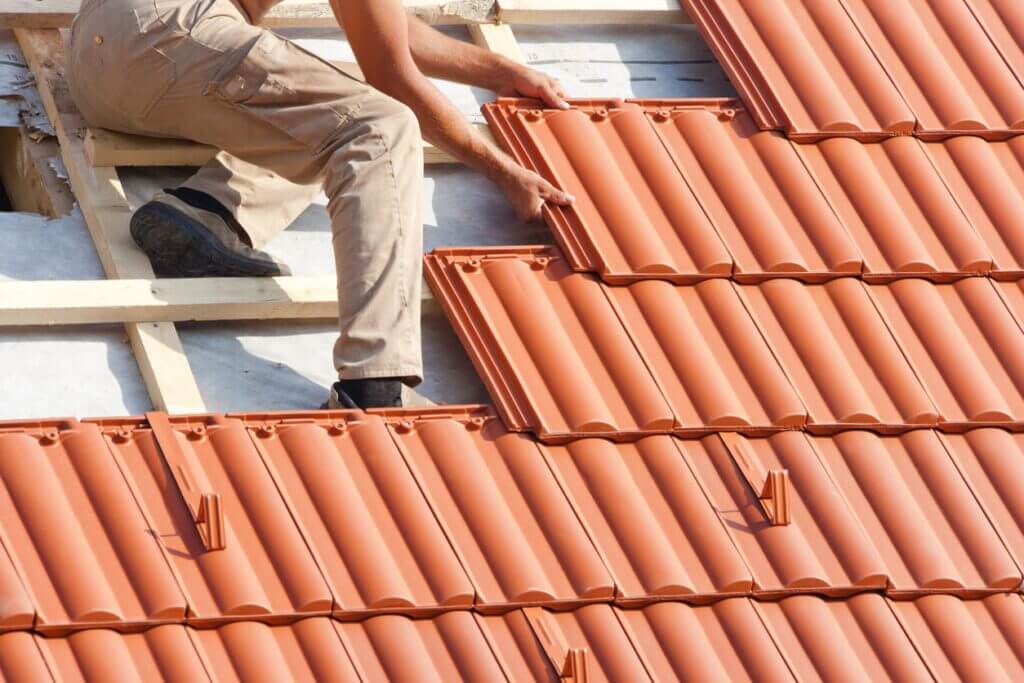
Tile roof repairs are rarely one-size-fits-all, and neither are the costs. From simple fixes to full structural work, the scope and complexity of the issue can significantly impact pricing. While it’s helpful to understand average ranges, it’s even more important to work with a contractor who offers clear, honest assessments without unnecessary upsells.
Overview of Tile Roof Repair Cost Ranges:
The following estimates are based on national averages and are intended to give you a general idea of what different types of tile roof repairs might cost. Your actual cost may vary, especially in the Atlanta area, due to local labor rates, materials availability, and the specific condition of your roof.
Basic Tile Replacement
If only a few tiles are cracked, slipped, or missing:
- Cost Range: $300-$800
- Includes labor and matching or closely matching tiles.
Underlayment Repair
When the waterproof layer beneath the tiles begins to fail:
- Cost Range: $2,000-$6,000+
- Depends on how many squares (100 sq ft) need replacement, plus tile removal and reinstallation.
Full Tile Roof Section Rebuild
For significant damage requiring both underlayment and tile replacement:
- Cost Range: $7,000-$20,000+
- Often necessary when leaks have gone undetected or past repairs were improperly done.
Reminder: These are just estimates based on national data. Since many factors go into determining roof repair costs, your costs may vary from these averages.
Cost Factors:
Several variables affect your total repair bill. That’s why an on-site evaluation from a trustworthy local contractor is key.
Accessibility and Slope
Steeper roofs, multi-story homes, or properties with limited access, such as heavily landscaped yards, typically incur higher labor costs due to additional safety measures and time.
Type of Tile (Clay vs. Concrete)
Clay tiles are more fragile and expensive to replace, and sourcing matching tiles, especially for older or imported roofs, can add to material costs. Concrete tiles are generally easier to work with and more widely available.
Age of the Roof and Condition of the Decking
Older roofs may have weakened decking or battens that need reinforcement. In these cases, costs go beyond surface-level repairs and into structural work, which naturally increases the price.
Why Honest Quoting Matters—And How Mr. Roofer Provides It
At Mr. Roofer, we believe in no-surprise pricing. That starts with a thorough inspection to uncover what’s really happening beneath the tiles, not just what’s visible on the surface.
You’ll receive:
- A detailed written estimate
- Clear explanation of each recommended repair
- Photos of any issues we uncover
- Repair options that prioritize restoration over replacement
We never push full roof replacements unless absolutely necessary. Our goal is to extend the life of your tile roof and give you peace of mind, without pressure, gimmicks, or inflated pricing.
How to Prevent Future Tile Roof Problems
While tile roofs are durable by design, Atlanta’s unique mix of weather, trees, and architectural styles can still lead to preventable issues. The key to protecting your investment? Consistent, strategic maintenance.
Even small steps taken seasonally can add years to your roof’s life and prevent costly damage before it starts.
Seasonal Maintenance Tips:
Here’s a simple guide to help you stay ahead of problems throughout the year. (Tip: Bookmark this or print it out for your home maintenance binder.)
Seasonal Tip | Why It Matters |
Check After Heavy Storms or Freezing Weather | Atlanta’s pop-up thunderstorms, hail, and rare freezes can crack tiles or shift flashing, often invisibly. Inspecting your roof or calling for a post-storm inspection ensures small issues don’t escalate. |
Keep Valleys and Gutters Clear of Debris | Leaves and pine needles collect in roof valleys and gutters, especially in wooded neighborhoods. Clogged drainage traps moisture under tiles, leading to rot and leaks. Clean gutters in spring and fall. |
Annual Inspections of Tile Alignment and Underlayment | A trained eye can spot tile displacement, flashing issues, or underlayment deterioration before they lead to interior damage. Annual checkups, especially on older roofs, are essential. |
Benefits of Long-Term Repair and Maintenance Plans
Preventive care is about more than just upkeep. It’s about protecting your home’s value, safety, and aesthetics for the long haul.
With Mr. Roofer’s maintenance programs, you get:
- Proactive inspections scheduled around Atlanta’s storm seasons
- Early detection of tile movement, flashing wear, and underlayment aging
- Priority service and transparent reporting from a team that knows your roof’s history
It’s not just about avoiding emergencies. It’s about extending the life of your roof and gaining peace of mind knowing a trusted local expert is on your side.
Final Thoughts: Protect Your Tile Roof Before Small Issues Become Big Problems
Your tile roof is more than just a beautiful architectural feature. It’s your home’s first line of defense. In Atlanta’s unpredictable climate, even a single slipped tile or aging underlayment can quietly lead to thousands in water damage if ignored. But the good news? Most tile roof issues can be repaired, not replaced, if caught early.
At Mr. Roofer, we understand the unique needs of high-value homes in Atlanta’s historic and tree-lined neighborhoods. Our inspection-first, repair-first approach means you get honest answers, not sales pressure. Whether it’s a minor crack, failing flashing, or underlayment nearing its limit, our goal is to extend the life of your roof with craftsmanship you can trust.
Don’t wait for the leak to show up on your ceiling. Contact Mr. Roofer of Atlanta today to book your no-obligation consultation or learn more about our tile roof maintenance plans.
